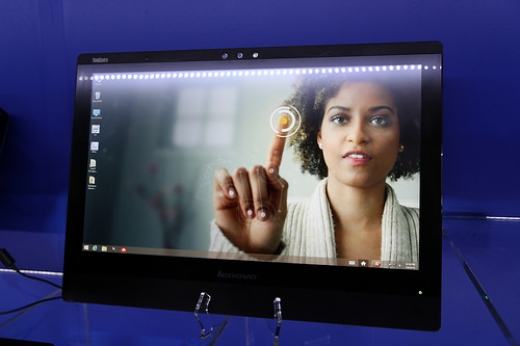Separated at Birth, United by Technology (Advertorial)

People around the world are harnessing technology in innovative ways to build meaningful connections with one another, often in the face of extraordinary odds.
Technology saturates our lives, and while many of the devices, apps, and platforms we use are intended to improve how we interact with each other, technology can sometimes seem impersonal. Online communications are often fleeting — “liking” a wedding announcement or giving a thumbs up for a career change do little to express the significance of such events.
But, for friends and families that have been separated by thousands of miles, political divisions, or social upheaval, technology can serve as a bridge for maintaining contact, building new relationships, or reconnecting with long-lost loved ones.
In both developed and developing nations, togetherness is regarded as a major benefit of technology. According to a global survey from Microsoft, 57 percent of people believe personal technology has a positive effect on social bonds, compared to 10 percent who believe it has a negative effect. Moreover, 43 percent say it strengthens family bonds, versus 16 percent who say it weakens them.
When French student Anaïs Bordier saw a YouTube clip of American actress Samantha Futerman, she noticed they shared striking similarities. After contacting the actress over Facebook, they discovered that they not only looked alike, but shared the same birthday and were both born in Seoul, South Korea. The two realized they were twin sisters adopted by separate families in Verona, N.J., and a Parisian suburb. Now the twins are running a Kickstarter campaign to fund a documentary about their first reunion.
Government restrictions often create an obstacle for people trying to connect. The Chinese government, for example, is notorious for censoring online content and limiting its citizens’ access to the Web. Traditionally, getting around the “Great Firewall of China” required using pricey private networks, but the startup FamilyLeaf is offering an inexpensive way for Chinese families to access Facebook photos and messages with loved ones living abroad.
“Lots of Chinese-American families have been disconnected by the Great Firewall of China,” Wesley Zhao, co-founder of FamilyLeaf, told Mashable. “FamilyLeaf isn’t something the government would worry about, as it’s just for family. It’s a perfect way for people to connect, even if some of their family’s content is on Facebook or other blocked sites.”
On a global level, 54 percent of people say technology has increased their personal freedom, and despite the presence of the firewall, 65 percent of Chinese citizens believe access to technology has made them freer.
Social media isn’t the only way people are bridging long distances. Raj Sadhu found himself traveling frequently from the U.S. back to India to help care for his elderly parents. This prompted him to create VESAG, a mobile device that allows you to monitor a user’s health from anywhere in the world. Worn like a watch, the device stores and delivers key health information through the cloud, enabling medical professionals to instantly interact with patients even from thousands of miles away.
Even more utilitarian tools can have a profound impact on togetherness. Luo Gang was abducted from a small town in Sichuan province as a little boy, and his main memory of his home was the location of two bridges. He posted his description online, and with only scant details users were able to pinpoint his hometown through satellite images on Google Maps. After a 23-year absence, Gang was able to reunite with his parents.
While globalization may be increasing the physical distance between friends and loved ones, inventive uses of technology are allowing their emotional bonds to remain stronger than ever. Sean Koehl, a vision strategists from Intel Labs, said that researchers are working on technologies that could help make people feel like they’re together when they’re actually apart.
“It boils down to making someone sense that they’re in the room with you,” he said. “The technologies playing into that feeling are the visual and the auditory experiences. For instance, the ability to create an image of a person through a projection, could play a major role. When you cross a certain (video playback) frame rate, the human brain starts to perceive what you’re seeing
as being real, rather than just a story that you’re watching. That breaks down the barrier between you and the content.”



